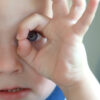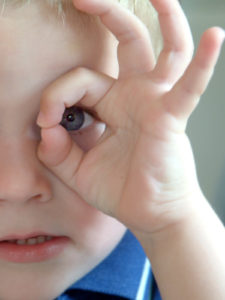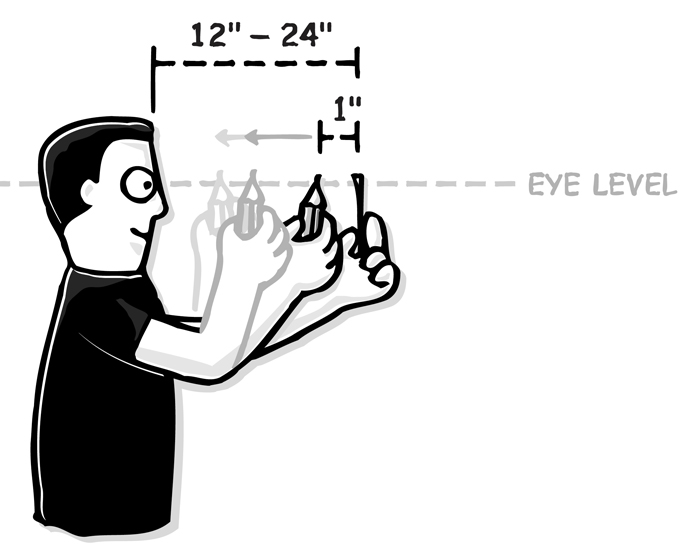
Common Eye Problems in Preschoolers and Warning Signs: Part 1
Early childhood is an exciting time for both kids and parents. Kids spend their days discovering the world by reading (or rather looking at pictures while you read to them), playing games, jumping, running, crawling and rolling around. Parents get to rediscover the wonder of the world through their child’s eyes. You want your preschooler to enjoy the time they have before it’s time to begin their elementary school journey. The last thing you want to think about is common eye problems in preschoolers.
But before your toddler embarks on their marathon of formal education, there’s one thing you need to be absolutely sure of: your toddler can see properly. Aside from severe vision disorders that babies can be born with, such as blindness or cataracts, it can be almost impossible to know how well or not your toddler can see.
Eye conditions in preschoolers are more common than you’d think. If these conditions go uncorrected or treated, they can severely diminish your toddler’s quality of life (and they’ve barely started living) and hinder their learning. It has been said that 80 percent of learning in school is done visually.
 In this two-part series, we’ll bring you the most common eye problems in preschoolers and how to spot the warning signs.
In this two-part series, we’ll bring you the most common eye problems in preschoolers and how to spot the warning signs.
Amblyopia or Lazy Eye
We start our series with possibly the most common vision condition in preschoolers: amblyopia, otherwise known as lazy eye. Lazy eye is a developmental issue that occurs when the brain begins to ignore the image being produced by one eye. As a result, it may cause the ignored eye to drift and look “lazy.”
There are several reasons why amblyopia occurs, and it’s usually linked to one eye being underdeveloped. Ironically, this eye actually develops astigmatism or farsightedness.
As these vision conditions only affect one eye, the brain is being sent one clear image and one blurry one. If this goes untreated, the brain will ignore the image being sent from the underdeveloped eye. If left untreated, the brain will continue to ignore the weak eye and the sight in that eye will only worsen.
Treatment
Doctors commonly treat amblyopia by essentially forcing the brain to use the weak eye until vision in said eye improves. Your physician will likely suggest that you cover the good eye with a patch for a certain amount of time every day. It’ll be a little uncomfortable at first, but it is a necessary step in regaining vision in the weak eye.
Sometimes doctors prescribe eyeglasses to correct the eye’s vision in conjunction with regular patch usage. If your child’s condition remains uncorrected before the ripe age of seven, the condition can become permanent. Currently, there is no cure for adult amblyopia, although researchers are working on it.
Warning Signs
Here are some signs to look out for in your children that could mean amblyopia:
- Frequent head tilting to be able to see
- Frequent squinting or eye-rubbing
- One eye drifting or wandering towards the inside or outside of the eye
- Eyes not working together when looking around
Hyperopia or Farsightedness
Hyperopia, or, more commonly, farsightedness, is a condition in which your preschooler will be able to see things clearly in the distance but not up close. While a poster on the wall on the other side of the room looks crystal clear, the coloring book in front of them blurs into a mess.
Hyperopia is a refractive error, meaning that the light entering the eye isn’t refracted properly, which then gives the brain a blurry image. Farsighted people’s corneas and lenses are curved too little.
If your preschooler is farsighted, it usually means they were born with this condition. Hyperopia is a vision condition that runs in families, so if you or someone else in your family has the condition, it isn’t unlikely that your preschooler will have it too.
The degree of the condition will depend on each individual toddler. Some children diagnosed with farsightedness can barely see their own hands, while others can manage to read and do other activities at a close distance, but not for long periods.
Treatment
As of right now, the only option aside from surgery (and we doubt you want to put your toddler through surgery) is corrective eyewear. Eyeglasses and contact lenses are popular among children because the condition can be easily corrected with the right prescription.
However, as your children age, their corneas and lenses will harden, making it more difficult for the eyewear to correct the problem. Regular eye exams and making sure your child has the right prescription can help avoid this.
Warning Signs
Unlike amblyopia, there are hardly any external signs to look for in your toddler. Instead, you’ll have to rely on your toddler’s ability to describe their symptoms to you. Here are some questions to ask your toddler:
- Do nearby objects seem blurry?
- Do your eyes burn or itch a lot?
- Do you get headaches when doing close tasks (reading, writing, drawing, computer games, etc.)?
- Do you need to squint to see things close to you clearly?
Myopia or Nearsightedness
Myopia is the next eye condition we need to discuss. It is the opposite vision condition of farsightedness. Those with myopia can see things close to them quite clearly while seeing things in the distance poses a lot of difficulty.
Like hyperopia, myopia is also a refractive error. In this case, the lens of the eye is curved too much because the eyeball is too long. When this happens, light does not properly direct itself to the retina, which is what causes blurry vision.
Like farsightedness, myopia is also a condition that runs in families. Knowing your family’s eye health history is extremely important in keeping your preschoolers healthy.
Treatment
Once again, the only available treatment for myopia is corrective lenses. Eyeglasses and contact lenses are available.
However, depending on the degree of nearsightedness, your child may only need to wear their glasses when they need to see things in the distance, such as a chalkboard or while playing sports.
Warning Signs
Here are some questions to ask your child to see if they may be suffering from myopia:
- Do you need to squint to see things in the distance?
- Do you get headaches from looking at things that are far away?
- Do you have blurry vision when looking at things in the distance?
Remember that your preschooler needs to have an eye exam at least once a year. They’re at an age where their eyes are constantly changing and growing. One year their sight may be perfect, but then suddenly their lenses don’t develop properly and now they have blurred vision.
Thanks for reading Part 1 of our series. Check out Part 2 to read about three more common vision conditions in preschoolers.
Our Rebuild Your Vision Ocu-Plus Formula Contains All 17 Vitamins, Minerals, and Herbal Supplements to Improve Your Eye Health!




Curious why you haven’t addressed convergence insufficiency. That was an issue for sure with my older and possibly with my younger, and since we can’t afford a developmental optometrist out of pocket and traditional optometrists don’t seem to take it seriously, it’s been a frustrating journey.